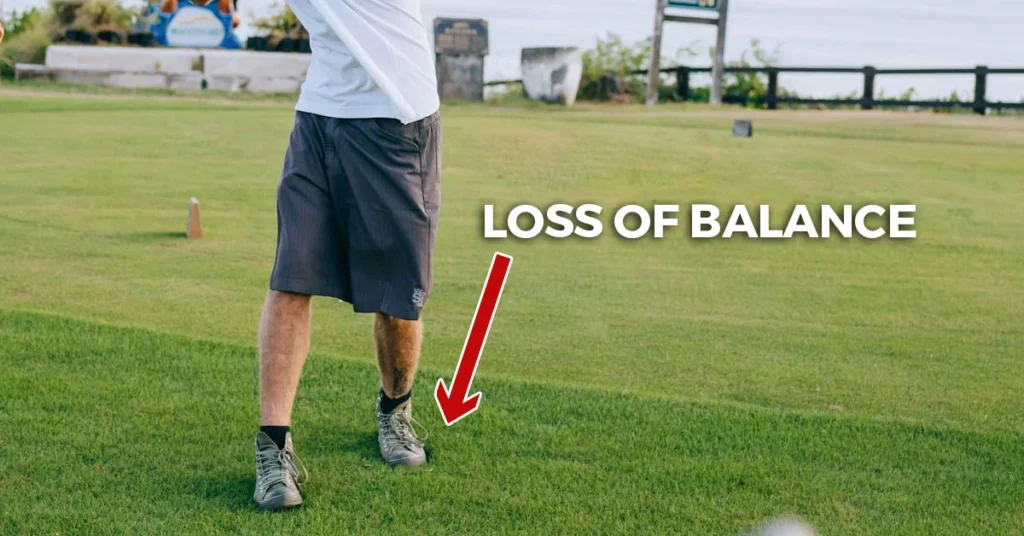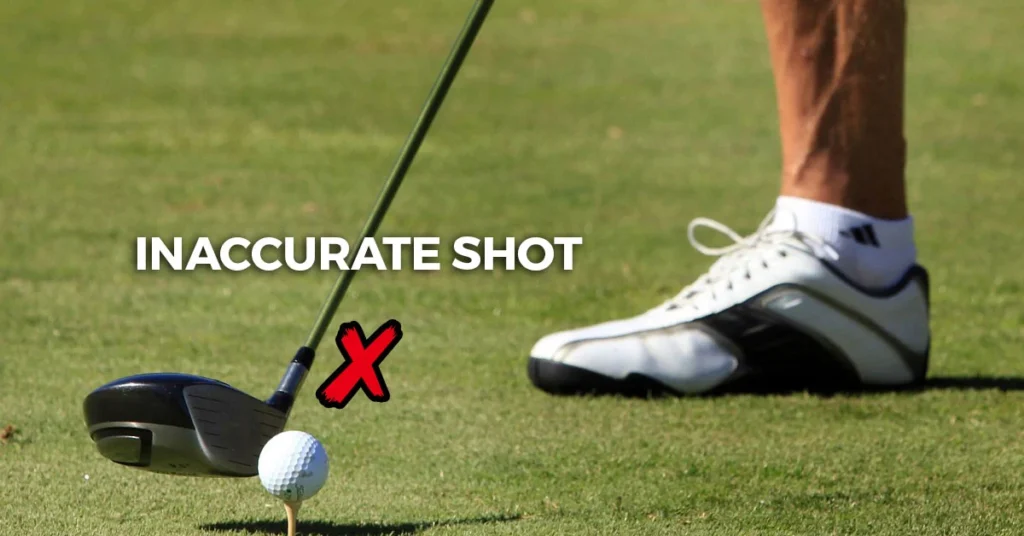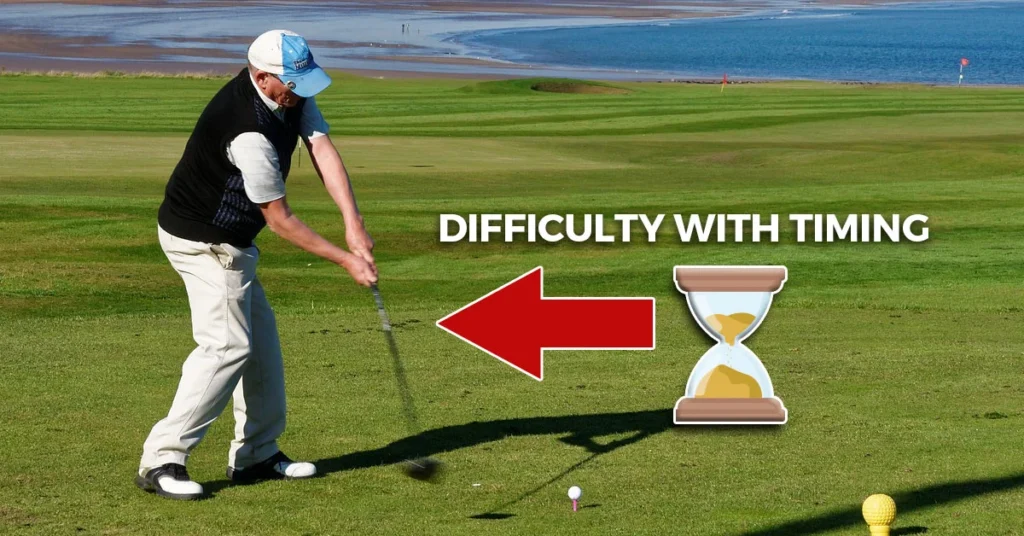A smooth, controlled swing is the secret to a good game of golf. Swing plays a very vital role in the performance of golfers game. If you have a good swinging ability, you succeed as a golfer, But one problem that many golfers have regularly is Swaying during the swing.
Swaying can result in Poor ball contact, loss of power, and inconsistency. If you are here and want to improve your game, you must think of How to stop swaying in a golf swing.
In this post, we will discuss what swaying is and the reasons behind swaying in the swing. We will also offer helpful advice on how to stop swaying in a golf swing.
What is swaying?
Before moving toward how to stop swaying in the golf swing, we must first talk about what swaying in golf is. Many people use the term “sway” to describe a swing error. But in common words, swaying is defined as
“When playing golf, Excessive lateral movement of the lower body is commonly referred
to as swaying.”
As the swing continues, the hips move forward toward the front foot during the downswing and backward toward the back foot during the backswing and impact. In other words, the hips are unstable outside a specific range commonly known as”the box.”
Swaying is typically undesirable because it can lead to inconsistent ball striking and poor shot results. The common cause of swaying in golf is an excessive shift in weight to the outside of the back foot during the backswing, which causes the body to move sideways and away from the target.
Problems Caused By Swaying:
Regarding a golf swing, “swaying” can cause several issues that could compromise a golfer’s game performance. The following are some problems caused by swaying:
Loss Of Balance:

Excessively lateral movement can cause a golfer to lose their balance during the swing, making it challenging to keep their position steady and constant throughout the stroke.
Unreliable Ball Striking:
Swaying results in inconsistent contact between the clubface and the ball. This inconsistency can lead to mishits, such as thin or fat shots.
Power loss:
Swaying can make it difficult for a golfer to shift their weight from their back to their front foot, reducing shot distance and power.
Inaccurate Shot:

Swaying introduces lateral movement, which can change the club path and result in off-target shots.
Difficulty with Timing:

Golf swing timing and sequencing can be affected by swaying.
Golfers frequently maintain a stable lower body, correct weight transfer, and ensure their body movements are more rotational than lateral to address these issues.
How to Stop Swaying in the Golf Swing:
Stopping swaying in the golf swing involves developing a more stable lower body and improving weight transfer. Here are some tips to help you minimize or eliminate swaying:
Put your focus on transferring your weight to the inside of your foot.
During the backswing, your body should automatically rotate so that your weight shifts towards your back foot instead of sliding backward with your hips. It takes a lot of body rotation in the backswing, especially in the hips and shoulders, to achieve this proper posture.
To avoid swaying and maximize your potential for maximum power during the downswing and impact, ensure that your weight is over your instep, or the inside part of your foot, instead of tilting towards the outer edge.
Putting your weight on the outside of your foot will make it more difficult to execute a powerful downswing and may even be a sign that you are inclined towards swaying.
Turn your right knee inward
Although swaying can start in the backswing phase, it usually happens during the downswing.
Keep your hips steady from the start to avoid early hip movement and to guarantee stability for the downswing. To counteract hip sliding, bending your right knee inward can be useful.
This small tweak securely locks your right knee position and is best incorporated into your setup or used as a swing trigger. As a result, your hips are forced to turn rather than move backward.
Properly coiled hips during the backswing facilitate a more intuitive natural unwinding process during the downswing and impact. There is not much lateral movement involved in this.
Drills To Stop Swaying:
In golf, your swing is significant. Perform drills that specifically target stability and weight transfer. When you swing, imagine a boundary between swaying and turning. Things can go wrong if you err on the side of swaying too much.
Swinging rotates your body at the top and causes you to shift your weight forward as you go down. However, if your swing could be stronger, you may sway back and forth rather than turn, Leading to numerous issues.
For instance, you can concentrate on rotation by practicing swings with a golf club across your shoulders and your feet close together.
While adjusting your golf swing may not feel natural at first, with regular practice and attention to technique, you can create a more stable and efficient swing that reduces or eliminates swaying.
The Reason Behind Swaying in the Golf Swing:
Swaying in a golf swing can be caused by a combination of factors, and addressing these issues can lead to a more controlled and effective swing. Here are some common reasons behind swaying in a golf swing:
- Improper Weight distribution.
- Absence of Core Stability.
- Overactivity of the lower body.
- Incorrect posture.
- Tightness in the hips can restrict proper rotation and encourage.
- Swaying can occur when one attempts to generate excessive power or swings too much, which can cause one to lose balance and control.
Appropriate instruction, concentrated practice, and body awareness are frequently used to address swaying. Working with an experienced instructor who can assess a player’s swing, pinpoint trouble areas, and offer swaying drills and exercises can benefit golfers. Read our article on how to fix reverse pivot in golf swing and all arms swing error fix.
Conclusions:
To sum up, How to stop swaying in the golf swing, we conclude that you must get rid of swaying in your golf swing for improved performance.
Golfers can address the fundamental causes of swaying by focusing on rotational movements over lateral shifts, incorporating targeted exercises and drills, and prioritizing core stability.
One cannot stress the value of hip mobility and flexibility in facilitating a smoother rotation and lowering the possibility of unintentional lateral movement. The golfer’s ability to reduce swaying is further improved by maintaining proper setup and posture and using a mindful approach to weight transfer.
You’re making progress if you understand the distinction between swaying and turning and if you practice methods like weight distribution and targeted drills. You’re making progress if you know the difference between swaying and turning and if you practice techniques like weight distribution and targeted exercises.
If you continue to use these techniques, your swing will become more reliable and efficient, improving your strength and success on the golf course.
After reading this full guide, I hope you will know how to stop swaying in a golf swing.
Frequently Asked Questions:
How important is proper setup and posture in preventing swaying?
It’s important to set up and posture correctly. An athletic posture, a neutral spine, and a balanced stance facilitate better rotation and less swaying. A controlled swing is enabled by starting with a strong foundation.
How do you stop swaying in a golf swing?
You can stop swaying in the golf swing by following tips like focusing on transferring your weight to the inside of your foot, doing some drills, and setting your posture.


